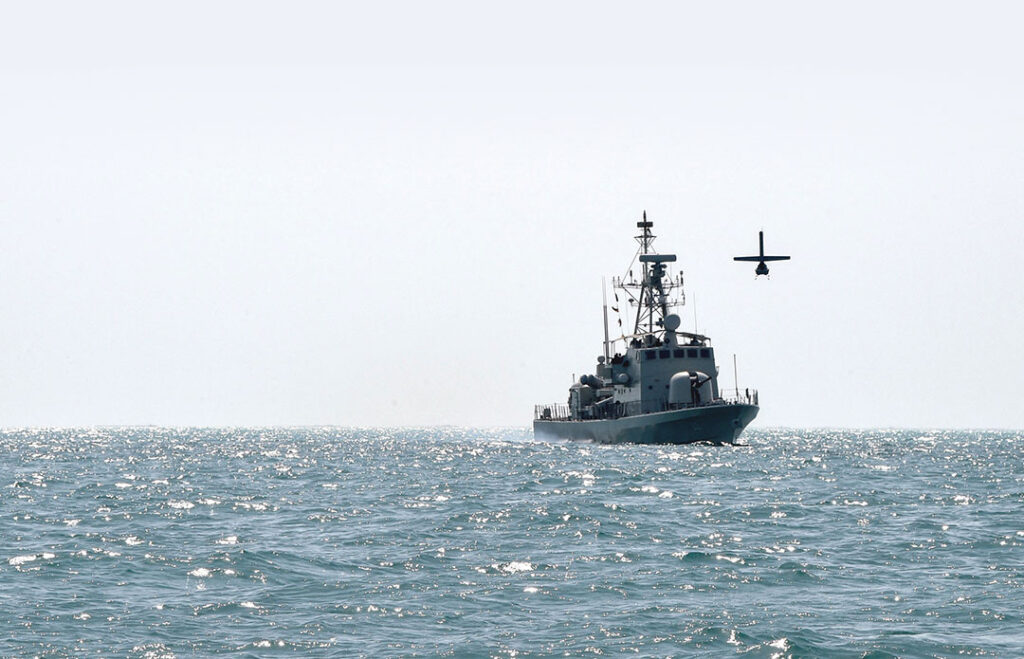ADF STAFF
Countries are embracing the use of unmanned aerial and surface vehicles to strengthen their ability to patrol and control their coastal waters. These tools allow for the surveillance and identifying of possible acts of piracy, illegal fishing and trafficking.
“One takeaway is the enhanced situational awareness from this technology expanding the range of sight in the field against targets in the field,” Nigerian drone pilot Ebunoluwa George Ojo-ami, a member of the Nigerian Maritime Academy and a volunteer with the Gulf of Guinea Maritime Institute, told ADF. “Compared to manned aircraft, drones offer relatively cheaper cost and can be designed to be fully autonomous or semiautonomous.”
Although drones primarily have been used over land, they’re becoming more attractive to overstretched maritime forces tasked with monitoring the vast ocean. Nigeria acquired four drones in 2021 as part of its Deep Blue maritime security project.
Bashir Yusuf Jamoh, director-general of the Nigerian Maritime Administration and Safety Agency, announced the new drones on Twitter.
“Our 4 Unmanned Air Vehicles will ensure that we have a sustainable round-the-clock surveillance system from the sky furnishing real-time information for timely action to keep our waters safe for shipping and seafarers,” he said.
In October 2022, Ghana acquired unmanned aerial vehicles for use by the Ghana Boundary Commission and the Ghana Navy to enhance patrolling and to demarcate Ghana’s maritime boundaries.
The Seychelles has supplemented its patrol boats with drones that use artificial intelligence to monitor fishing vessels operating in its 1.3 million-square-kilometer exclusive economic zone.
“We can see how drone technology works together seamlessly with ground personnel, also integrating into and communicating with their security systems,” Ojo-ami of Nigeria said. “Drones are easily adapted to most existing security software, so adding a security drone to an existing operation is a relatively seamless process.”

